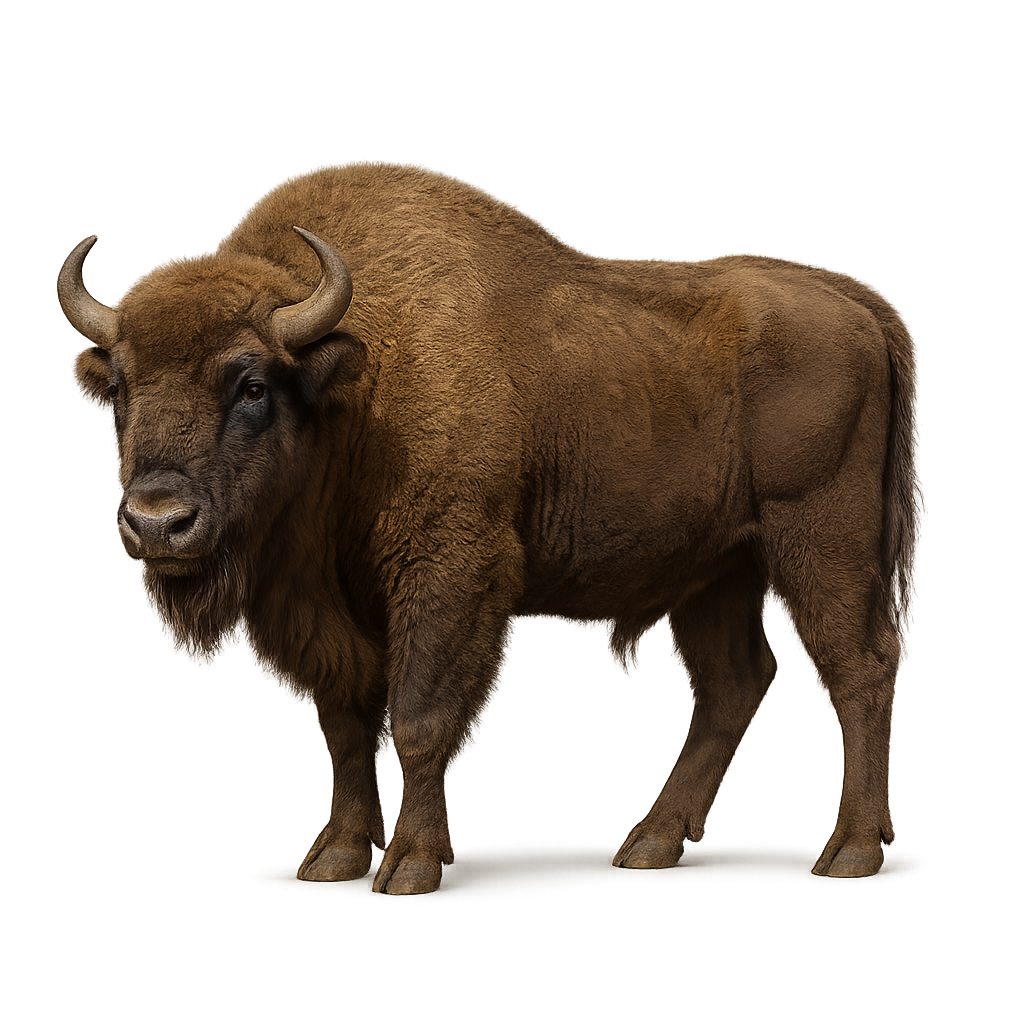Your wildlife photography guide.
Explore the european bison in detail, study its behavior, prepare your shots.
Where to observe and photograph the european bison in the wild
Learn where and when to spot the european bison in the wild, how to identify the species based on distinctive features, and what natural environments it inhabits. The WildlifePhotographer app offers tailored photography tips that reflect the european bison’s behavior, helping you capture better wildlife images. Explore the full species profile for key information including description, habitat, active periods, and approach techniques.
European bison
Scientific name: Bos bonasus

IUCN Status: Near Threatened
Family: BOVIDAE
Group: Mammals
Sensitivity to human approach: Suspicious
Minimum approach distance: 60 m
Rut period: August to September
Gestation: 260-270 jours
Births: April to May
Habitat:
Forests and meadows
Activity period :
Primarily active during the day, with peak activity in the morning and late afternoon.
Identification and description:
The European Bison is the largest land mammal in Europe, characterized by its imposing size, thick fur, and arched back. Once widespread across the forests of Europe, it nearly went extinct in the early 20th century, but thanks to conservation programs, wild populations have been reintroduced in several European regions. The European Bison primarily inhabits forests and wooded meadows, where it feeds on grasses, leaves, twigs, and young tree shoots.
This bison is a social animal, living in small groups or large herds, with males fighting for dominance. While its population is growing, the European Bison remains a vulnerable species due to habitat loss and fragmentation of its territory. The protection and management of its habitats remain essential for its survival.
Recommended lens:
300 mm – adjust based on distance, desired framing (portrait or habitat), and approach conditions.
Photography tips:
Approach slowly and discreetly, using a telephoto lens to capture images at a distance, as the European Bison is a massive animal and may become defensive if it feels threatened.
Photograph early in the morning or late in the afternoon, when the light is soft and the European Bison is more active, often moving or feeding in forests or meadows.
Capture moments of natural behavior: The European Bison lives in herds, which creates beautiful opportunities to capture group dynamics or impressive portraits of this majestic animal.
Be patient and respectful: The European Bison can be quite secretive, especially when it hides in forests. Wait for moments when it is more visible without disturbing its natural activities.
The European Bison is a vulnerable species, but it has made a remarkable comeback thanks to conservation efforts. It is essential to respect its natural environment and not disturb its feeding or social behavior. Follow local conservation guidelines to preserve this species and its natural habitat.
The WildlifePhotographer App is coming soon!
Be the first to explore the best nature spots, track rutting seasons, log your observations, and observe more wildlife.
Already 1 431 wildlife lovers subscribed worldwide

